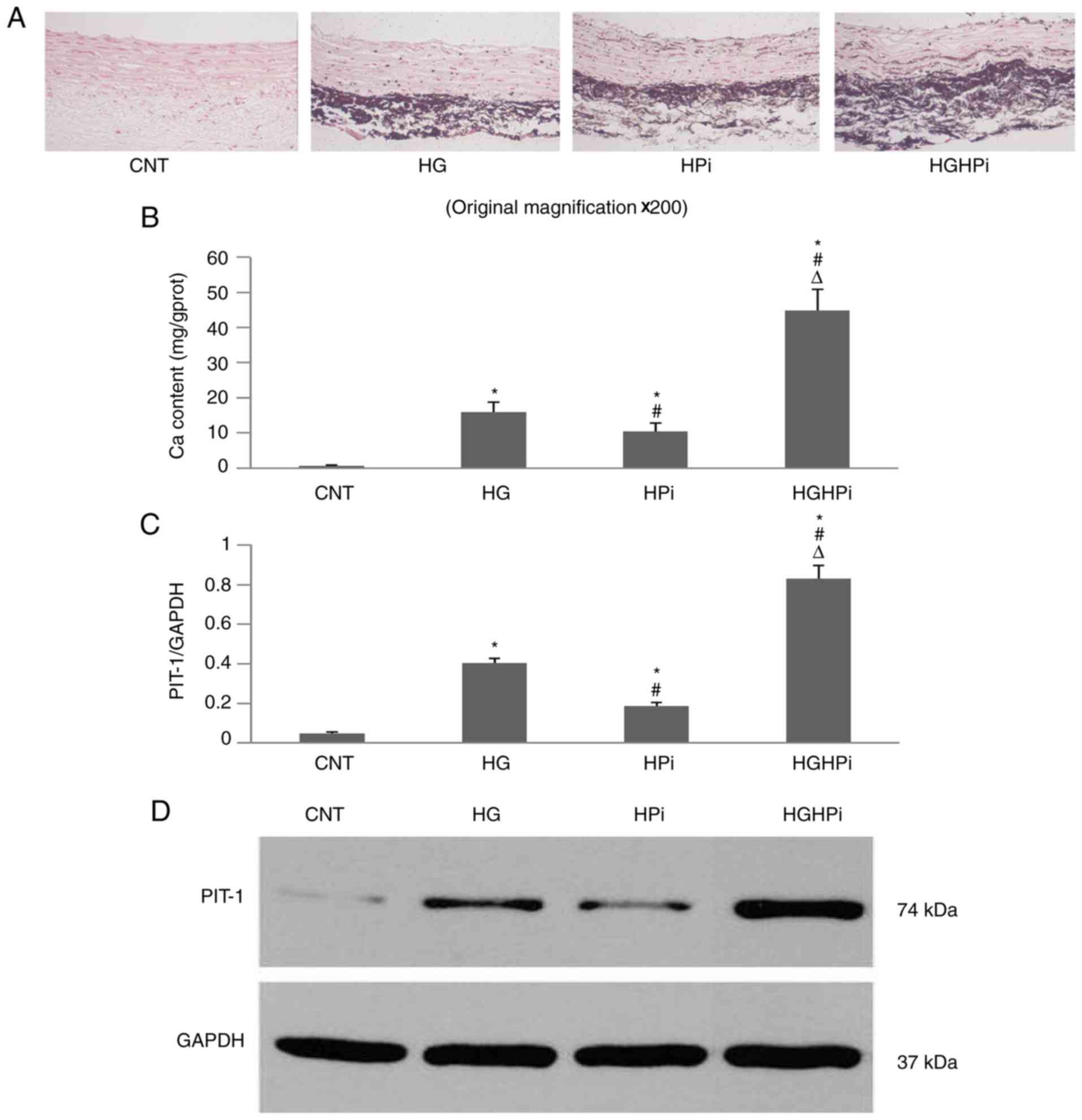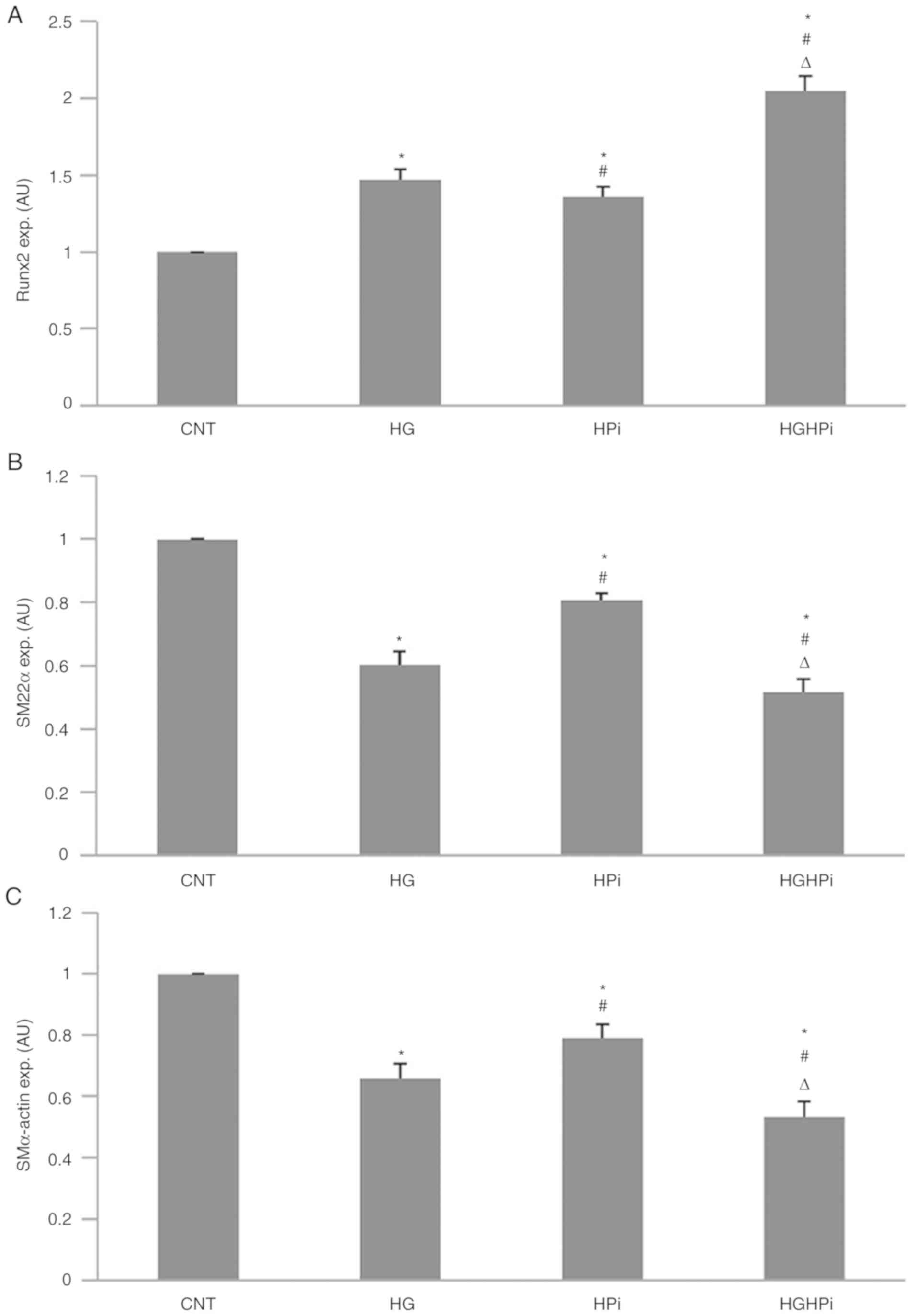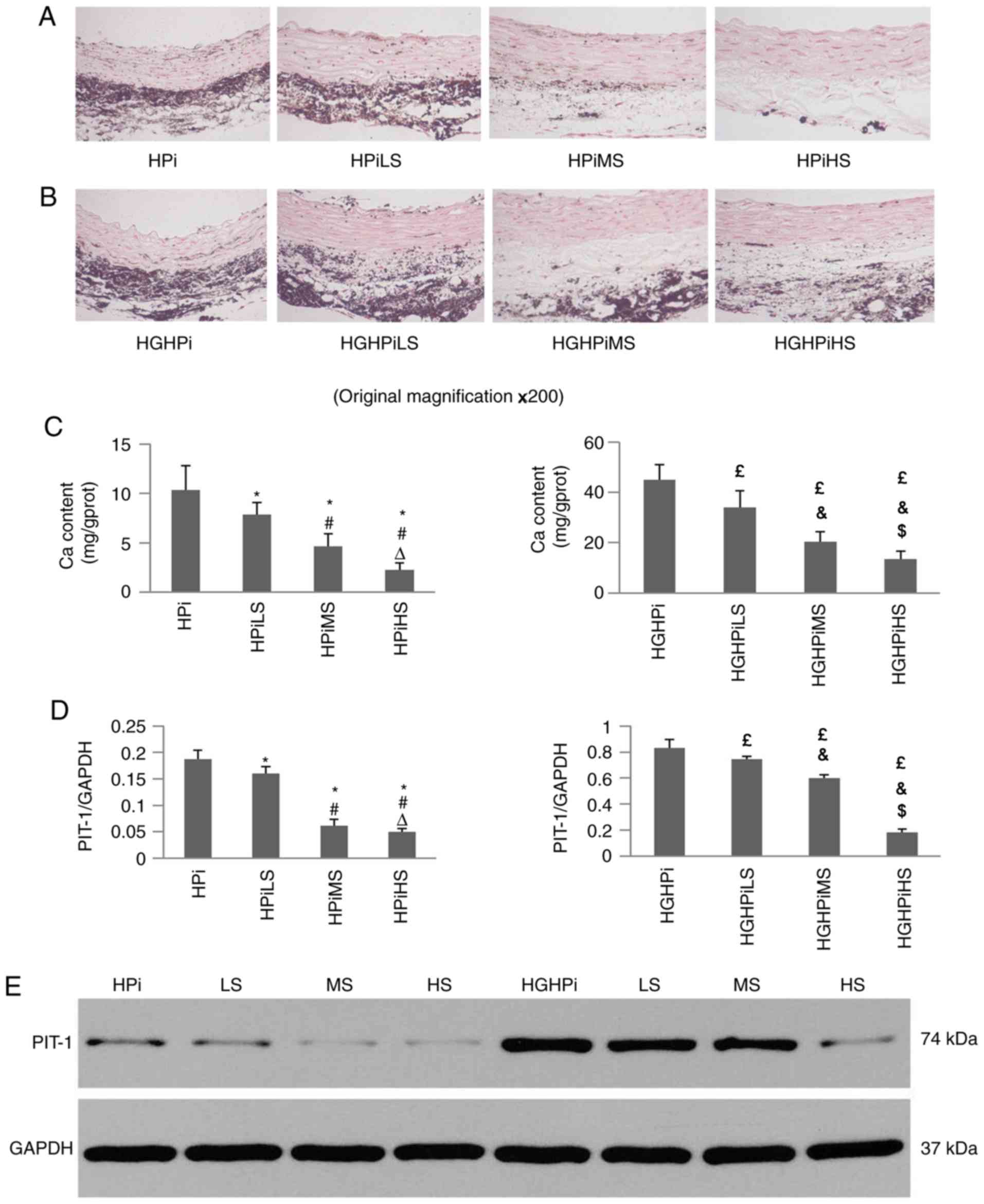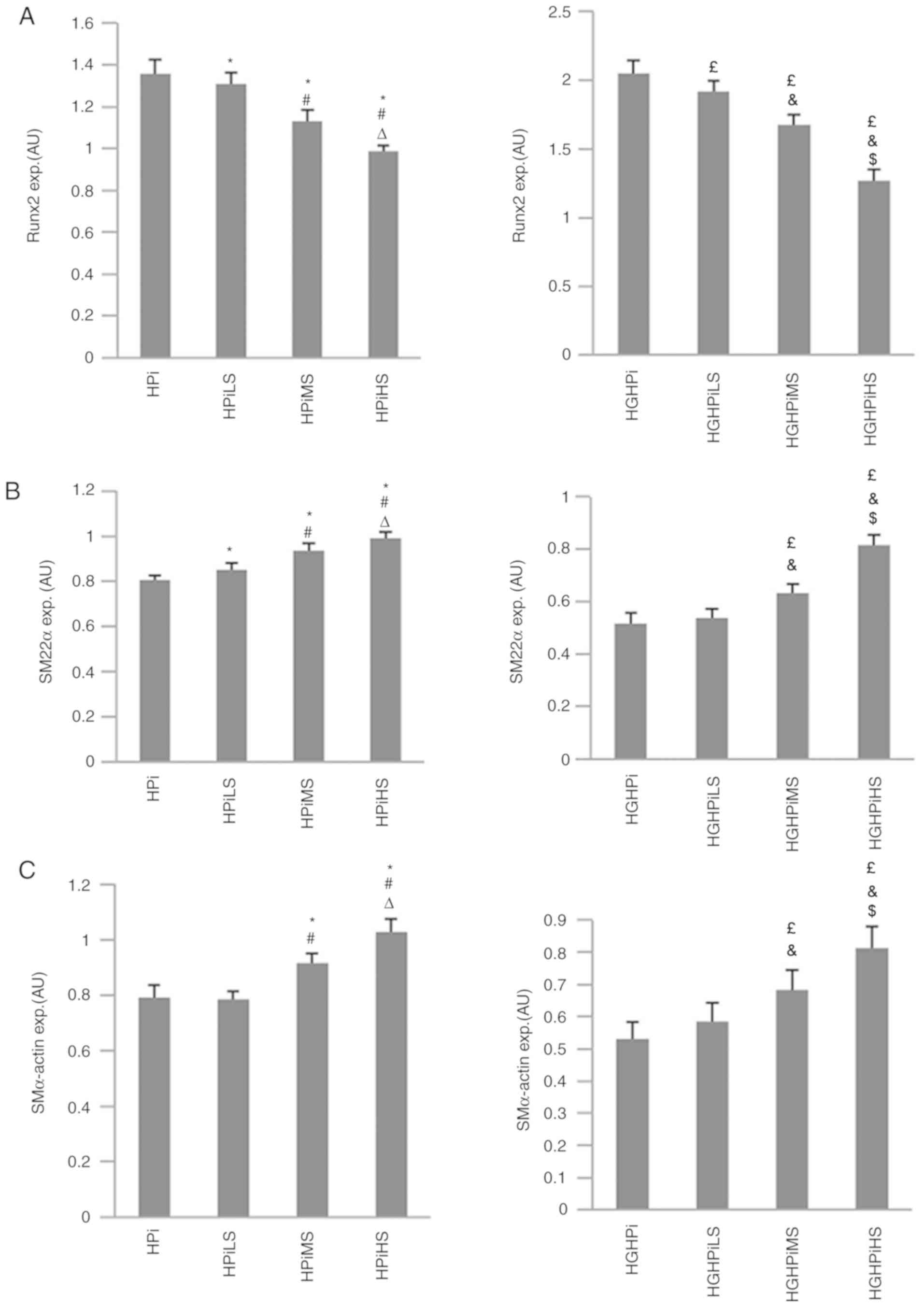|
1
|
Blacher J, Guerin AP, Pannier B, Marchais
SJ and London GM: Arterial calcification, arterial stiffness, and
cardiovascular risk in end-stage renal disease. Hypertension.
38:938–942. 2001. View Article : Google Scholar : PubMed/NCBI
|
|
2
|
Ohya M, Otain H, Kimura K, Saika Y, Fujii
R, Yukawa S and Shigematsu T: Vascular calcification estimated by
aortic calcification area index is significant predictive parameter
of cardiovascular mortality in hemodialysis patients. Clin Exp
Nephrol. 15:877–883. 2011. View Article : Google Scholar : PubMed/NCBI
|
|
3
|
London GM, Guérin AP, Marchais SJ,
Métivier F, Pannier B and Adda H: Arterial media calcification in
end-stage renal disease: Impact on all-cause and cardiovascular
mortality. Nephrol Dial Transplant. 18:1731–1740. 2003. View Article : Google Scholar : PubMed/NCBI
|
|
4
|
Górriz JL, Molina P, Cerverón MJ, Vila R,
Bover J, Nieto J, Barril G, Martínez-Castelao A, Fernández E,
Escudero V, et al: Vascular calcification in patients with
nondialysis CKD over 3 years. Clin J Am Soc Nephrol. 10:654–666.
2015. View Article : Google Scholar : PubMed/NCBI
|
|
5
|
Hruska KA, Mathew S, Lund R, Qiu P and
Pratt R: Hyperphosphatemia of chronic kidney disease. Kidney Int.
74:148–157. 2008. View Article : Google Scholar : PubMed/NCBI
|
|
6
|
Demer LL and Tintut Y: Vascular
calcification: Pathobiology of a multifaceted disease. Circulation.
117:2938–2948. 2008. View Article : Google Scholar : PubMed/NCBI
|
|
7
|
Giachelli CM: Vascular calcification
mechanisms. J Am Soc Nephrol. 15:2959–2964. 2004. View Article : Google Scholar : PubMed/NCBI
|
|
8
|
Mizobuchi M, Tower D and Slatopolsky E:
Vascular calcification: The killer of patients with chronic kidney
disease. J Am Soc Nephrol. 20:1453–1464. 2009. View Article : Google Scholar : PubMed/NCBI
|
|
9
|
Shanahan CM, Crouthamel MH, Kapustin A and
Giachelli CM: Arterial calcification in chronic kidney disease: Key
roles for calcium and phosphate. Circ Res. 109:697–711. 2011.
View Article : Google Scholar : PubMed/NCBI
|
|
10
|
Steitz SA, Speer MY, Curinga G, Yang HY,
Haynes P, Aebersold R, Schinke T, Karsenty G and Giachelli CM:
Smooth muscle cell phenotypic transition associated with
calcification: Upregulation of Cbfα1 and downregulation of smooth
muscle lineage markers. Circ Res. 89:1147–1154. 2001. View Article : Google Scholar : PubMed/NCBI
|
|
11
|
Speer MY, Li X, Hiremath PG and Giachelli
CM: Runx2/Cbfa1, but not loss of myocardin, is required for smooth
muscle cell lineage reprogramming toward osteochondrogenesis. J
Cell Biochem. 110:935–947. 2010. View Article : Google Scholar : PubMed/NCBI
|
|
12
|
Zhang J, Zheng B, Zhou PP, Zhang RN, He M,
Yang Z and Wen JK: Vascular calcification is coupled with
phenotypic conversion of vascular smooth muscle cells through
Klf5-mediated transactivation of the Runx2 promoter. Biosci Rep.
34:e001482014. View Article : Google Scholar : PubMed/NCBI
|
|
13
|
Liao L, Zhuang X, Li W, Su Q, Zhao J and
Liu Y: Polysaccharide from Fuzi protects against Ox-LDL-induced
calcification of human vascular smooth muscle cells by increasing
autophagic activity. Mol Med Rep. 17:5109–5115. 2018.PubMed/NCBI
|
|
14
|
Miyamoto K, Haito-sugino S, Kuwahara S,
Ohi A, Nomura K, Ito M, Kuwahata M, Kido S, Tatsumi S, Kaneko I and
Segawa H: Sodium-dependent phosphate cotransporters: Lessons from
gene knockout and mutation studies. J Pharm Sci. 100:3719–3730.
2011. View Article : Google Scholar : PubMed/NCBI
|
|
15
|
Li X, Yang HY and Giachelli CM: Role of
the sodium-dependent phosphate cotransporter, Pit-1, in vascular
smooth muscle cell calcification. Circ Res. 98:905–912. 2006.
View Article : Google Scholar : PubMed/NCBI
|
|
16
|
Lau WL, Festing MH and Giachelli CM:
Phosphate and vascular calcification: Emerging role of the
sodium-dependent phosphate co-transporter PiT-1. Thromb Haemost.
104:464–470. 2010. View Article : Google Scholar : PubMed/NCBI
|
|
17
|
Pitt B, Zannad F, Remme WJ, Cody R,
Castaigne A, Perez A, Palensky J and Wittes J: The effect of
spironolactone on morbidity and mortality in patients with severe
heart failure. Randomized aldactone evaluation study investigators.
N Engl J Med. 341:709–717. 1999. View Article : Google Scholar : PubMed/NCBI
|
|
18
|
Vizzardi E, D'Aloia A, Giubbini R,
Bordonali T, Bugatti S, Pezzali N, Romeo A, Dei Cas A, Metra M and
Dei Cas L: Effect of spironolactone on left ventricular ejection
fraction and volumes in patients with class I or II heart failure.
Am J Cardiol. 106:1292–1296. 2010. View Article : Google Scholar : PubMed/NCBI
|
|
19
|
Brief M and Schiffrin EL: Vascular actions
of aldosterone. J Vasc Res. 50:89–99. 2013. View Article : Google Scholar : PubMed/NCBI
|
|
20
|
McCurley A and Jaffe IZ: Mineralocorticoid
receptors in vascular function and disease. Mol Cell Endocrinol.
350:256–265. 2012. View Article : Google Scholar : PubMed/NCBI
|
|
21
|
Wu SY, Yu YR, Cai Y, Jia LX, Wang X, Xiao
CS, Tang CS and Qi YF: Endogenous aldosterone is involved in
vascular calcification in rat. Exp Biol Med (Maywood). 237:31–37.
2012. View Article : Google Scholar : PubMed/NCBI
|
|
22
|
Jaffe IZ, Tintut Y, Newfell BG, Demer LL
and Mendelsohn ME: Mineralocorticoid receptor activation promotes
vascular cell calcification. Arterioscler Thromb Vasc Biol.
27:799–805. 2007. View Article : Google Scholar : PubMed/NCBI
|
|
23
|
Nitta K, Akiba T and Nihei H: Aldosterone
blockade and vascular calcification in hemodialysis patients. Am J
Med. 115:2502003. View Article : Google Scholar : PubMed/NCBI
|
|
24
|
Tatsumoto N, Yamada S, Tokumoto M,
Eriguchi M, Noguchi H, Torisu K, Tsuruya K and Kitazono T:
Spironolactone ameliorates arterial medial calcification in uremic
rats: The roll of mineralocorticoid receptor signaling in vascular
calcification. Am J Physiol Renal Physiol. 309:F967–F999. 2015.
View Article : Google Scholar : PubMed/NCBI
|
|
25
|
Yokozawa T, Zheng PD, Oura H and Koizumi
F: Animal model of adenine-induced chronic renal failure in rats.
Nephron. 44:230–234. 1986. View Article : Google Scholar : PubMed/NCBI
|
|
26
|
Andrassy KM: Comments on ‘KDIGO 2012
clinical practice guideline for the evaluation and management of
chronic kidney disease’. Kidney Int. 84:622–623. 2013. View Article : Google Scholar : PubMed/NCBI
|
|
27
|
Livak KJ and Schmittgen TD: Analysis of
relative gene expression data using real-time quantitative PCR and
the 2(-Delta Delta C(T)) Method. Methods. 25:402–408. 2001.
View Article : Google Scholar : PubMed/NCBI
|
|
28
|
Masumoto A, Sonou T, Ohya M, Yashiro M,
Nakashima Y, Okuda K, Iwashita Y, Mima T, Negi S and Shigematsu T:
Calcium overload accelerates phosphate-induced vascular
calcification via Pit-1, but not the calcium-sensing receptor. J
Atheroscler Thromb. 24:716–724. 2017. View Article : Google Scholar : PubMed/NCBI
|
|
29
|
Hwang IC, Park HE, Kim HL, Kim HM, Park
JB, Yoon YE, Lee SP, Kim HK, Cho GY, Sohn DW and Kim YJ: Systemic
inflammation is associated with coronary artery calcification and
all-cause mortality in chronic kidney disease. Circ J.
80:1644–1652. 2016. View Article : Google Scholar : PubMed/NCBI
|
|
30
|
Jono S, McKee MD, Murry CE, Shioi A,
Nishizawa Y, Mori K, Morii H and Giachelli CM: Phosphate regulation
of vascular smooth muscle cell calcification. Circ Res. 87:E10–E17.
2000. View Article : Google Scholar : PubMed/NCBI
|
|
31
|
Yoshida T, Yamashita M and Hayashi M:
Kruppel-like factor 4 contributes to high phosphate-induced
phenotypic switching of vascular smooth muscle cells into
osteogenic cells. J Biol Chem. 287:25706–25714. 2012. View Article : Google Scholar : PubMed/NCBI
|
|
32
|
Yoshida T, Yamashita M, Horimai C and
Hayashi M: High glucose concentration does not modulate the
formation of arterial medial calcification in experimental uremic
rats. J Vasc Res. 50:512–520. 2013. View Article : Google Scholar : PubMed/NCBI
|
|
33
|
Ren X, Wei Q, Shao H, Sun Z and Liu N: A
rat model of diabetic artery calcification. J Endocrinol Invest.
35:497–503. 2012.PubMed/NCBI
|
|
34
|
Wang P, Zhou P, Chen W and Peng D:
Combined effects of hyperphosphatemia and hyperglycemia on the
calcification of cultured human aortic smooth muscle cells. Exp
Ther Med. 17:863–868. 2019.PubMed/NCBI
|
|
35
|
Jardine MJ, Hata J, Woodward M, Perkovic
V, Ninomiya T, Arima H, Zoungas S, Cass A, Patel A, Marre M, et al:
Prediction of kidney-related outcomes in patients with type 2
diabetes. Am J Kidney Dis. 60:770–778. 2012. View Article : Google Scholar : PubMed/NCBI
|
|
36
|
Leavitt BJ, Sheppard L, Maloney C, Clough
RA, Braxton JH, Charlesworth DC, Weintraub RM, Hernandez F,
Olmstead EM, Nugent WC, et al: Effects of diabetes and associated
conditions on long-term survival after coronary artery bypass graft
surgery. Circulation. 110 (11 suppl 1):II41–II44. 2004. View Article : Google Scholar : PubMed/NCBI
|
|
37
|
Wan EYF, Fong DYT, Fung CSC, Yu EYT, Chin
WY, Chan AKC and Lam CLK: Prediction of new onset of end stage
renal disease in Chinese patients with type 2 diabetes mellitus-a
population-based retrospective cohort study. BMC Nephrol.
18:2572017. View Article : Google Scholar : PubMed/NCBI
|
|
38
|
Yang H, Curinga G and Giachelli CM:
Elevated extracellular calcium levels induce smooth muscle cell
matrix mineralization in vitro. Kidney Int. 66:2293–2299. 2004.
View Article : Google Scholar : PubMed/NCBI
|
|
39
|
Villa-Bellosta R and Sorribas V:
Phosphonoformic acid prevents vascular smooth muscle cell
calcification by inhibiting calcium-phosphate deposition.
Arterioscler Thromb Vasc Biol. 29:761–766. 1009. View Article : Google Scholar
|
|
40
|
Akiyoshi T, Ota H, Iijima K, Son BK, Kahyo
T, Setou M, Ogawa S, Ouchi Y and Akishita M: A novel organ culture
model of aorta for vascular calcification. Atherosclerosis.
244:51–58. 2016. View Article : Google Scholar : PubMed/NCBI
|
|
41
|
Suzuki A, Ghayor C, Guicheux J, Magne D,
Quillard S, Kakita A, Ono Y, Miura Y, Oiso Y, Itoh M and Caverzasio
J: Enhanced expression of the inorganic phosphate transporter Pit-1
is involved in BMP-2-induced matrix mineralization in
osteoblast-like cells. J Bone Miner Res. 21:674–683. 2006.
View Article : Google Scholar : PubMed/NCBI
|
|
42
|
Jaffe IZ and Mendelsohn ME: Angiotensin II
and aldosterone regulate gene transcription via functional
mineralocortocoid receptors in human coronary artery smooth muscle
cells. Circ Res. 96:643–650. 2005. View Article : Google Scholar : PubMed/NCBI
|
|
43
|
Voelkl J, Alesutan I, Leibrock CB,
Quintanilla-Martinez L, Kuhn V, Feger M, Mia S, Ahmed MS,
Rosenblatt KP, Kuro-O M and Lang F: Spironolactone ameliorates
PIT1-dependent vascular osteoinduction in klotho-hypomorphic mice.
J Clin Invest. 123:812–822. 2013.PubMed/NCBI
|
|
44
|
Kojima K, Yamamoto K, Fujioka H and Kaneko
H: Pharmacokinetics of spironolactone and potassium canrenoate in
humans. J Pharmacobiodyn. 8:161–166. 1985. View Article : Google Scholar : PubMed/NCBI
|
|
45
|
Overdiek HW, Hermens WA and Merkus FW: New
insights into the pharmacokinetics of spironolactone. Clin
Pharmacol Ther. 38:469–474. 1985. View Article : Google Scholar : PubMed/NCBI
|
|
46
|
Terai I, Yamano K, Ichihara N, Arai J and
Kobayashi K: Influence of spironolactone on neonatal screening for
congenital adrenal hyperplasia. Arch Dis Child Fetal Neonatal Ed.
81:F179–F183. 1999. View Article : Google Scholar : PubMed/NCBI
|
|
47
|
Hayer MK, Edwards NC, Slinn G, Moody WE,
Steeds RP, Ferro CJ, Price AM, Andujar C, Dutton M, Webster R, et
al: A randomized, multicenter, open-label, blinded end point trial
comparing the effects of spironolactone to chlorthalidone on left
ventricular mass in patients with early-stage chronic kidney
disease: Rationale and design of the SPIRO-CKD trial. Am Heart J.
191:37–46. 2017. View Article : Google Scholar : PubMed/NCBI
|
|
48
|
Hosoya K, Minakuchi H, Wakino S, Fujimura
K, Hasegawa K, Komatsu M, Yoshifuji A, Futatsugi K, Shinozuka K,
Washida N, et al: Insulin resistance in chronic kidney disease is
ameliorated by spironolactone in rats and humans. Kidney Int.
87:749–760. 2015. View Article : Google Scholar : PubMed/NCBI
|













